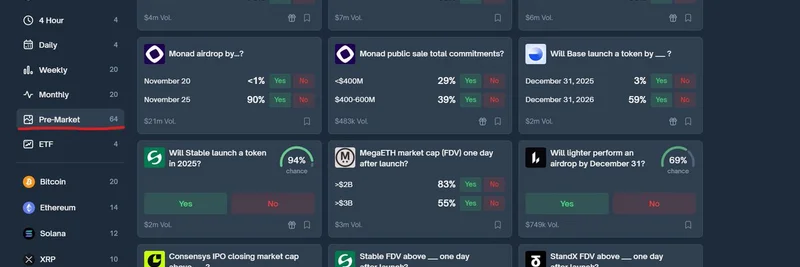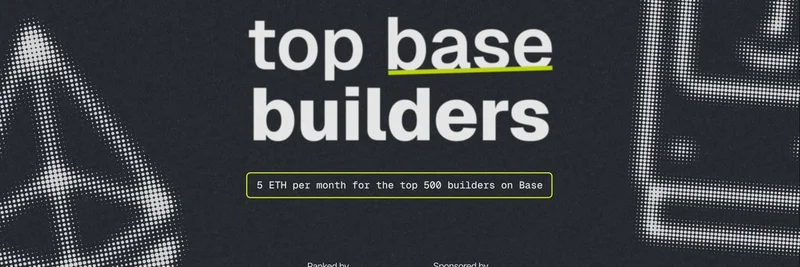In the fast-paced world of crypto, prediction markets like Polymarket are becoming a hotspot for spotting inefficiencies. A recent tweet from PixOnChain highlights a goldmine of opportunities in the platform's crypto category, where "dumb capital" – money thrown around without much research – leads to mispriced bets on token sales and launches.
PixOnChain points out that many users dive into these markets without understanding the basics of how token sales work. This creates edges for those who do their homework. For instance, in the Monad public sale, if you believe the commitments could hit $800 million, buying the "above $1B" yes shares at just 7 cents could yield a quick 2x return as the sale progresses.
This isn't isolated to Monad. Similar patterns have played out in markets for MegaETH and MetaDAO, where early insights into funding rounds or airdrops can turn small bets into significant gains. Polymarket's pre-market section, as shown in the screenshot, lists bets on everything from whether Stable will launch a token in 2025 (94% yes) to Dogecoin's market cap projections – tying directly into the meme token ecosystem we cover here at Meme Insider.
Understanding the Edge in Prediction Markets
Prediction markets operate on collective wisdom, but when participants skip the research, prices skew. Token sales, often for emerging blockchain projects, involve commitments from investors. These can escalate quickly, especially with multipliers from subscriptions like Coinbase's, which PixOnChain mentions as a key overlooked factor.
For meme token enthusiasts, this is relevant because many hyped launches start as memes before evolving. Bets on platforms like Polymarket allow you to gauge community sentiment without direct investment risk. If a meme project's token sale market is mispriced – say, undervaluing a viral narrative – jumping in early can be profitable.
Spotting Opportunities Like a Pro
To capitalize, keep tabs on project updates. Follow official announcements, track investor commitments, and monitor related X discussions. PixOnChain advises having the right tabs open, as these markets lack bots, giving human insight a real advantage.
Take the Monad example: The market for total commitments above $300 million is trading high, but higher thresholds are undervalued. If the sale surges from $150 million to $500 million, those cheap yes shares on bigger numbers could double or more.
Why This Matters for Meme Tokens
At Meme Insider, we focus on the wild world of meme tokens, and prediction markets offer a meta-layer of engagement. Bets on launches like Will MetaMask Launch a Token by Dec 31? (4% yes) or StandX FDV above $800 million reflect the same hype cycles that drive meme pumps. Understanding these can help predict which memes might go viral or secure funding.
Remember, this is betting, not investing – outcomes aren't guaranteed. But for blockchain practitioners looking to sharpen their skills, diving into Polymarket's crypto section is a practical way to learn market dynamics.
Final Thoughts
PixOnChain's thread underscores a simple truth: Knowledge is profit in crypto. By avoiding the pitfalls of dumb capital and doing basic due diligence, you can find edges in these markets. Whether you're betting on Monad's raise or the next big meme launch, stay informed and bet smart. Check out more insights on meme tokens and blockchain trends right here on meme-insider.com.



